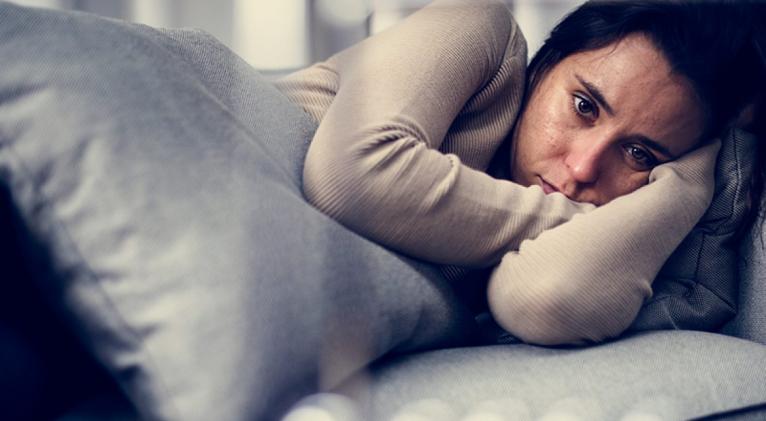USA: Mental Chaos
especiales

Something common for the fan of North American documentary exhibitions is to observe how, despite the appearances they try to create, transcends the increasingly chaotic mental health of the society they praise.
Therefore, it’s very common how those North American soldiers who have collaborated in the depredation of Iraq and Afghanistan, to give just two examples, receive little official attention upon their return -not to say abandonment-, which leads to the use of mercenaries to the service of the worst interests, or a mental decline that can lead to suicide.
This is more noticeable when we talk about the richest nation in the world, with all the conveniences the advancement of science offers and where thousands of people converge in search of a better life, generally coming from countries exploited by the Empire to where they try to get there by all means.
Now it is said that even climate change can cause problems of this sort in a society where there’s no Mental Health Law.
And it’s that millions of Americans live with mental health issues, created, in addition to the aforementioned problems, by biological factors such as genetics, brain chemistry, life experiences such as trauma and abuse, or a family history with such situation.
The National Alliance on Mental Health reports that one out of five adults in the United States experience a mental illness in their lifetime, and nearly 10 million Americans are currently living with a serious mental disorder, like anxiety, deep depression, and bipolar disorder.
According to the Anexits and Depretion Association of America, this disorder is highly treatable, but only about 37% of those affected actually receive treatment. It’s common for both anxiety and depression to be diagnosed. Symptoms can include excessive worry, feeling agitated, restlessness, fatigue, tense muscles, sleeping problems, and panic attacks.
Major depressive disorder is the leading cause of disability among Americans ages 15-44, and it’s more frequent in women than in men. Some of the symptoms are: depressed mood, decreased interest or pleasure, changes in weight, appetite, and sleep patterns, fatigue, and feelings of worthlessness.
Bipolar disorders affect men and women equally, and the average age for developing them is around age 25; people who suffer it may experience manic episodes where their mood and behavior are drastically different from normal.
90% of American adults believe that there’s a mental health crisis in the country, according to a Cable News Network survey, in collaboration with the Kaiser Family Foundation, which states that people who suffer from it can die prematurely and not only because of suicide.
As a result, each year, 46 million Americans suffer from mental illness. Only 41% receive aid, and this percentage mainly includes the wealthy sector.
MAIN SOURCE
Poverty is a great producer of mental health problems. If you're constantly worried about whether you'll have enough money to pay for rent, food, and transportation—and you live in a part of town that's noisier, less resourceful, heavily policed, and sparse in green space—most part, if not all, your energy is saved solely for survival.
“Your response to stress is constantly activated,” says Sharon Lambert, professor of applied psychology at University College Cork (Ireland). “Your body reaches a static charge because it only has the ability to withstand a certain amount of stress. You can get physically and mentally sick. If you live in poverty and you are also bipolar, or homosexual, or a woman, this stress load can be even greater”, she says.
Those who need quality mental health services the most in the United States are the least likely to receive them. A single therapy session can cost around $100 to $300 if you don't have insurance, and many therapists don't take insurance, let alone Medicaid, because insurance companies don't pay them well.
Community clinics and nonprofit organizations that offer free or low-cost therapy often have months-long waiting lists. It’s estimated that 54% of American adults with a diagnosed mental disorder do not receive treatment.
If someone is able to access affordable mental health services, it’s very likely that the doctor who treats them comes from a higher income family who does not really understand their experience. The very high cost of a college degree in the United States, among other factors, means that the field of mental health is not as culturally diverse as it should be.
According to a report by the American Psychologits Assen, 86% of American psychologists in 2015 were white, and that rose to 88% in 2019, said the Bureau of Labor Statistics.
Part of the problem is that students who train to become therapists take on substantial debt to earn a graduate degree, then are required to work for free during and even after school to gather training hours, which simply it’s not sustainable, especially for many people of color.
In short, as long as there’s appalling inequality in access to education, health care, child care, and affordable housing in this country, there will be far too many poor people living with preventable mental illness.
This situation will overwhelm agencies that are underfunded to meet all of these needs, and whose staff is often underpaid, overworked, and exhausted physicians.
Sheila Savannah, managing director of the Prevention Institute, a national nonprofit organization, explains that in traditional mental health care, little attention is paid to the knowledge, strengths, and resources that clients could bring to their own healing and that of their communities. Instead, the emphasis is put on the client's problems, and the clinician is the expert. “It’s a configuration that disempowers and reinforces classist and racist systems,” she says.
Translated by Amilkal Labañino / CubaSí Translation Staff














Add new comment